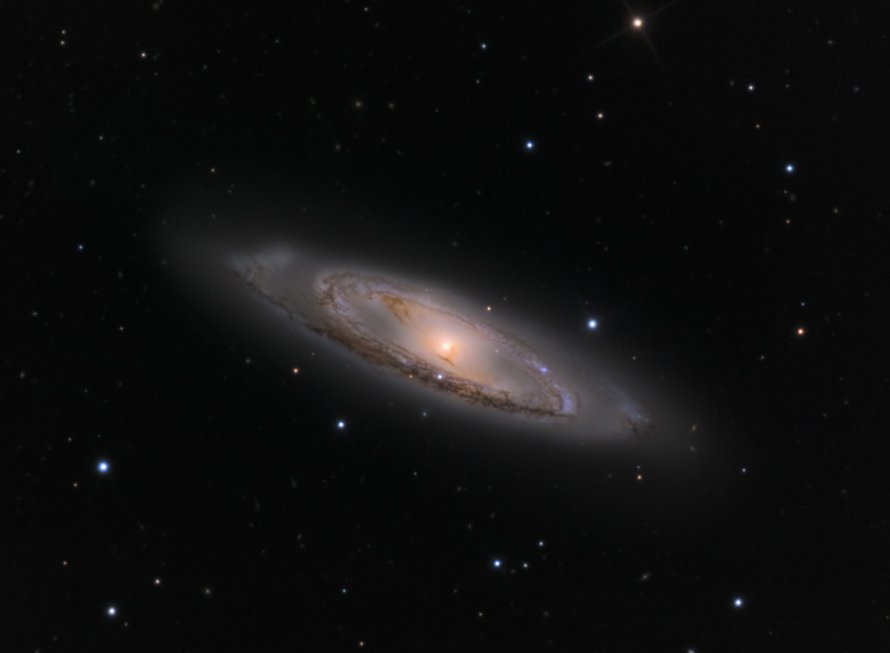M65 (NGC 3623) - Leo Triplet
Messier 65 (NGC 3623), also known as the Leo Triplet, is a barred spiral galaxy located in the constellation Leo in the M66 Group of galaxies. M65 is 35000000 light years away from Earth.
M65 is best viewed during early spring, is magnitude 10.3, and can be viewed with small telescope. M65 is 8.7' x 2.5' in apparent size. For reference, the full moon is 30'.
Observing difficulty: Intermediate
- Name:
- Leo Triplet
- Type:
- barred spiral galaxy
- Constellation:
- Leo
- NGC or IC:
- NGC 3623
- Magnitude:
- 10.3
- Viewing:
- small telescope
- Size:
- 8.7' x 2.5'
- Distance (light years):
- 35000000 LY
- RA:
- 11h 18.9m
- Dec:
- 13 6'
- Season:
- early spring
- Galaxy group:
- M66 Group
- Messier Marathon #:
- 32
* The naked eye can see up to magnitude ~7-8 objects under ideal dark sky conditions.
A Part of the Leo Triplet
Messier 65, also known as NGC 3623, is an intermediate spiral galaxy located in the constellation Leo. It is one of three galaxies that form the Leo Triplet, along with Messier 66 and NGC 3628. Messier 65 was discovered by Charles Messier in 1780, and it is located approximately 35 million light-years away from us.
Characteristics
Messier 65 is classified as an Sa-type spiral galaxy, indicating that it has tightly wound spiral arms and a large, bright central bulge. The galaxy's disk is seen almost from the edge, with a slight inclination that allows astronomers to observe its spiral structure. Despite this inclination, the galaxy's spiral arms are not prominent and appear smooth and well-defined, with a few notable dust lanes and regions of ionized hydrogen gas where star formation occurs.
Magnitude and Size
The apparent magnitude of Messier 65 is around 10.25, making it not visible to the naked eye but detectable with amateur telescopes under good conditions. The galaxy covers an area of 8.709 x 2.454 arc minutes in the night sky, translating to a linear diameter of approximately 60,000 light-years.
Finding and Viewing Messier 65
Messier 65 is found in the constellation Leo, along with its companions in the Leo Triplet. It is best viewed in spring, particularly April, when Leo is high in the night sky. The galaxy is located close to the ecliptic, the apparent path of the Sun, Moon, and planets across the sky, so sometimes it can be obscured by the Moon or planets.
To find Messier 65, locate the star Denebola, the tail of Leo, and move in a northeast direction. In this area of the sky, you will find the Leo Triplet. Messier 65 is the westernmost galaxy of the triplet. A small telescope or binoculars will reveal a faint smudge of light, while a larger telescope will show the elongated form of the galaxy and may even reveal some of its structure.
Observing Messier 65, along with its companions in the Leo Triplet, can be a rewarding experience, offering a glimpse into distant galactic neighbors. The galaxy's relatively high brightness and its location near two other galaxies make it an interesting target for both observation and photography.



